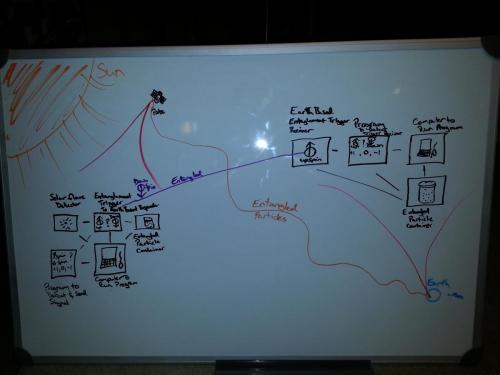-
Posts
17 -
Joined
-
Last visited
About Addictive Science
- Birthday February 14
Profile Information
-
Location
PA
-
Interests
All Things Science, Website Development, Current Technologies, Science Communication, Hiking, Backpacking,Gaming.
-
College Major/Degree
Master in Plumbing And Heating
-
Favorite Area of Science
Neuroscience
-
Biography
Master Plumber by Day, Science Communicator By Night
-
Occupation
I Own an Operate A High Tech Plumbing Business
Addictive Science's Achievements

Quark (2/13)
0
Reputation
-
This is crazy, I Was Just reading about this today in Max Tegmark's New Book: ‘Our Mathematical Universe’ and was thinking all day about how we could detect these Inflation ripples. I imagined if they did exist they would appear like Tree Rings, except theses would be Inflation Tree Ring. I don't know yet if they appear this way, but I'm glad I don't have to wait around for the answer. I thought this was going to be like the Higgs Boson all over again. http://www.sciencedaily.com/releases/2014/03/140317125850.htm
-
just wanted to check something, what happens when we close "the box"? do the entangled particles return to an undefined state? or are they useless as entangled particles now? if they are still usable could I open and close the box as many times as I wanted and get the same result with a definite spin that is the same as it were before?
-
Humm... in this case, Would the computer program that is interpreting the state of the photons spin become the observer ? or is the instrument that detects the photons spin the observer? ...is the scientist the Observer?; who is observing though an instrument which is projecting an image from what the detector can transmit.
-
When The Trigger "opens the box" the entangled particles will take one of their definite states On the probe and one on earth. The computer program will always be running to detect when something has happened to the entangled states of one of the sets of entangled particles. So if it detects No(#0) changes 100% of the time when running then no alarm will go off. If It Detects a particle change of an up or down(dose not matter which one) then an alarm will be triggered telling the computer something has happened to one of the Solar flare detectors because it has tripped a switch to "open it's box".
-
I drew a VERY VERY rough sketch of what I had in mind when I was thinking of how this would all go down. I may be way off on the methodology of how entangled particles communicate. So you can tell me if I'm way off or see if you can find a way that this could work instead of giving me a science lecture(Unless it's a really good one). The only Information that is being communicated from the trigger to the receiver is the actual spin of the particle. Nothing else needs to be known. The computer on earth will see that one of the sets of entangled particles has taken a definite spin either up or down, triggering the earth based computer that will then set off an alarm to the technician saying something set off one of the solar flare detectors on board the prob. The solar flare detectors on the probe when triggered, only sets off one of set of particles to be observed(destroyed). So One Solar flare detector - To one entanglement trigger - To one entangled receiver on earth - To one Earth based detector - To one earth based alarm computer.
-
I was thinking more of a basic detection system. Where in the information is not transferred, but and alarm is triggered telling an entangled partial/particles positioned on a satellite and one on Earth could respond to one another. In this case they would simply say that something is about to happen or has happened based on a detector and Trigger that would alter the positions of the entangled particle/particles. Almost binary I/0 depending on what is being detected and by what detector your reading.



